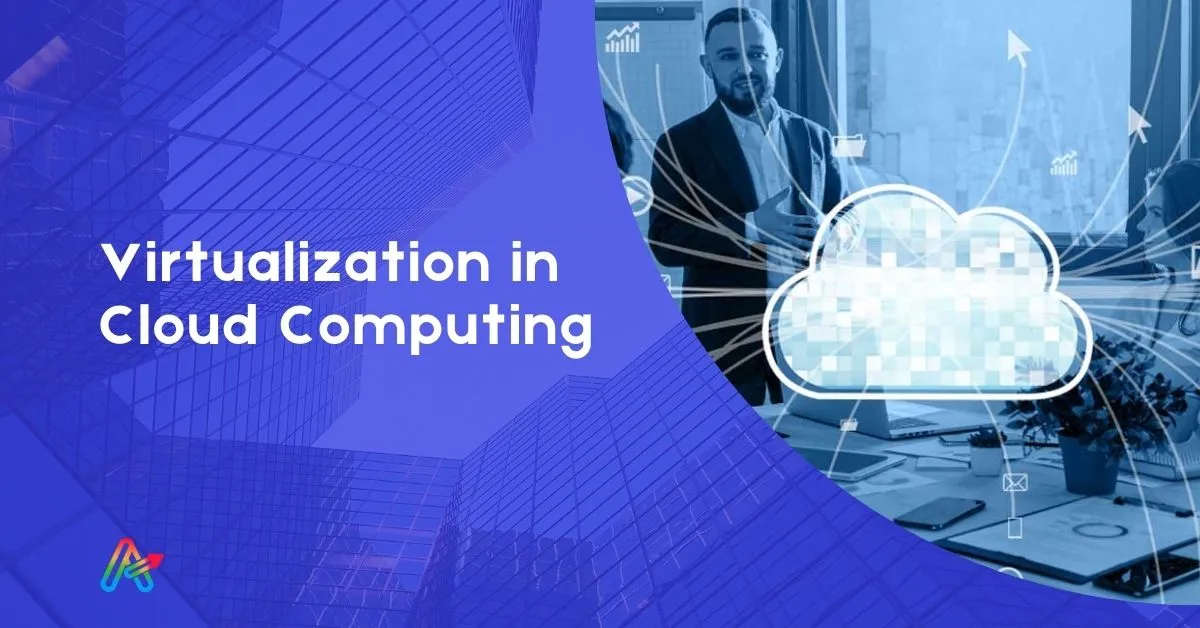
5 Steps to Understanding Virtualization in Cloud Computing

In the evolving landscape of information technology, virtualization stands out as a transformative technology, especially in the field of cloud computing. This 5 Steps to Understanding Virtualization in Cloud Computing discusses the concept of virtualization, its role in cloud computing, and how it has reshaped modern IT infrastructure.
5 Steps to Understanding Virtualization in Cloud Computing
At its core, virtualization refers to creating virtual versions of physical resources. These resources can include servers, storage devices, and network resources. With virtualization, a single physical machine can be divided into multiple virtual machines (VMs), each of which operates as an independent entity with its own operating system and applications.
The process of virtualization
Virtualization relies on a software layer known as a hypervisor or virtual machine monitor (VMM). The hypervisor sits between the hardware and the operating system, allocating physical resources to different virtual machines. There are two main categories of hypervisors:
- Type 1 hypervisor (bare-metal hypervisor): Installed directly on the physical hardware, this type of hypervisor is known for its efficiency and performance. Examples include VMware ESXi and Microsoft Hyper-V.
- Type 2 Hypervisor (Hosted Hypervisor): Runs on top of an existing operating system. While generally easier to set up, it may offer lower performance than a Type 1 hypervisor. Examples are VMware Workstation and Oracle VirtualBox.
Virtualization and Cloud Computing
Cloud computing leverages virtualization to deliver scalable and flexible IT resources over the Internet. Here’s how virtualization underpins cloud computing:

- Resource Pooling: Virtualization allows cloud providers to pool physical resources and allocate them dynamically based on demand. This pooling leads to efficient resource utilization and cost savings, as resources can be quickly provisioned or decommissioned.
- Scalability and elasticity: Virtual machines can be easily scaled up or down to meet fluctuating demands. This elasticity is a fundamental characteristic of cloud services, enabling businesses to handle varying workloads without the need for extensive physical infrastructure.
- Isolation and Security: Virtualization provides a level of isolation between different virtual machines. This isolation increases security, as problems with one VM do not affect others. Additionally, it allows for multi-tenancy, where multiple customers can share the same physical infrastructure while maintaining a separate and secure environment.
- Cost efficiency: By virtualizing physical hardware, cloud providers can make the most of their resources. This efficiency translates into cost savings, which are passed on to consumers. Users pay only for the resources they use, rather than investing in and maintaining physical hardware.
- Simplified Management: Virtualization tools and platforms provide powerful management capabilities. Cloud administrators can deploy, manage and monitor virtual machines and resources through a centralized interface, simplifying operations and maintenance.
Types of virtualization in cloud environments
Within the cloud computing framework, different types of virtualization play an important role:
- Server Virtualization: This refers to dividing a single physical server into multiple virtual servers. It is the most common form of virtualization used in cloud computing to efficiently manage computing resources.
- Storage virtualization: It abstracts physical storage resources, allowing them to be managed as a single, unified entity. It improves storage utilization, simplifies management and increases scalability.
- Network Virtualization: This involves creating a virtual network independent of the underlying physical network. It enables flexible and scalable network management, enhances security and improves resource allocation.
- Desktop Virtualization: This technology enables the delivery of desktop environments as a service. Users can access their desktop and applications from any device, from anywhere, improving flexibility and reducing the need for local hardware.

Challenges and Considerations
Although virtualization offers many benefits, it also comes with some challenges:
- Complexity: Managing a virtualized environment can be complex, especially as the number of virtual machines and resources increases. Effective management tools and practices are essential.
- Performance overheads: Virtualization introduces some performance overhead, although with modern hypervisors and hardware this is often minimal. However, for performance-critical applications, careful planning is required.
- Security Concerns: While virtualization increases isolation, it also introduces new security challenges. Ensuring proper configuration and security practices are critical to protecting against vulnerabilities.
- Licensing and compliance: Virtualization can make managing software licensing and regulatory compliance more complex. Organizations must navigate licensing agreements and ensure compliance with legal and regulatory requirements.
The future of virtualization in cloud computing
The future of virtualization in cloud computing is poised for more innovation. Emerging trends such as containerization, which offer a lightweight alternative to traditional virtualization, are gaining traction. Containers, exemplified by technologies such as Docker and Kubernetes, allow for more efficient and scalable deployment of applications.
Additionally, advances in hyper-converged infrastructure (HCI) and serverless computing are set to further refine the way virtualization is implemented and managed in cloud environments.
Conclusion
Virtualization is a cornerstone of cloud computing, providing the flexibility, efficiency and scalability that modern IT environments demand. By abstracting physical resources and enabling dynamic allocation, virtualization has revolutionized how businesses interact with IT infrastructure. As technology continues to advance, the synergy between virtualization and cloud computing will undoubtedly lead to greater innovation and efficiency in the IT landscape.











